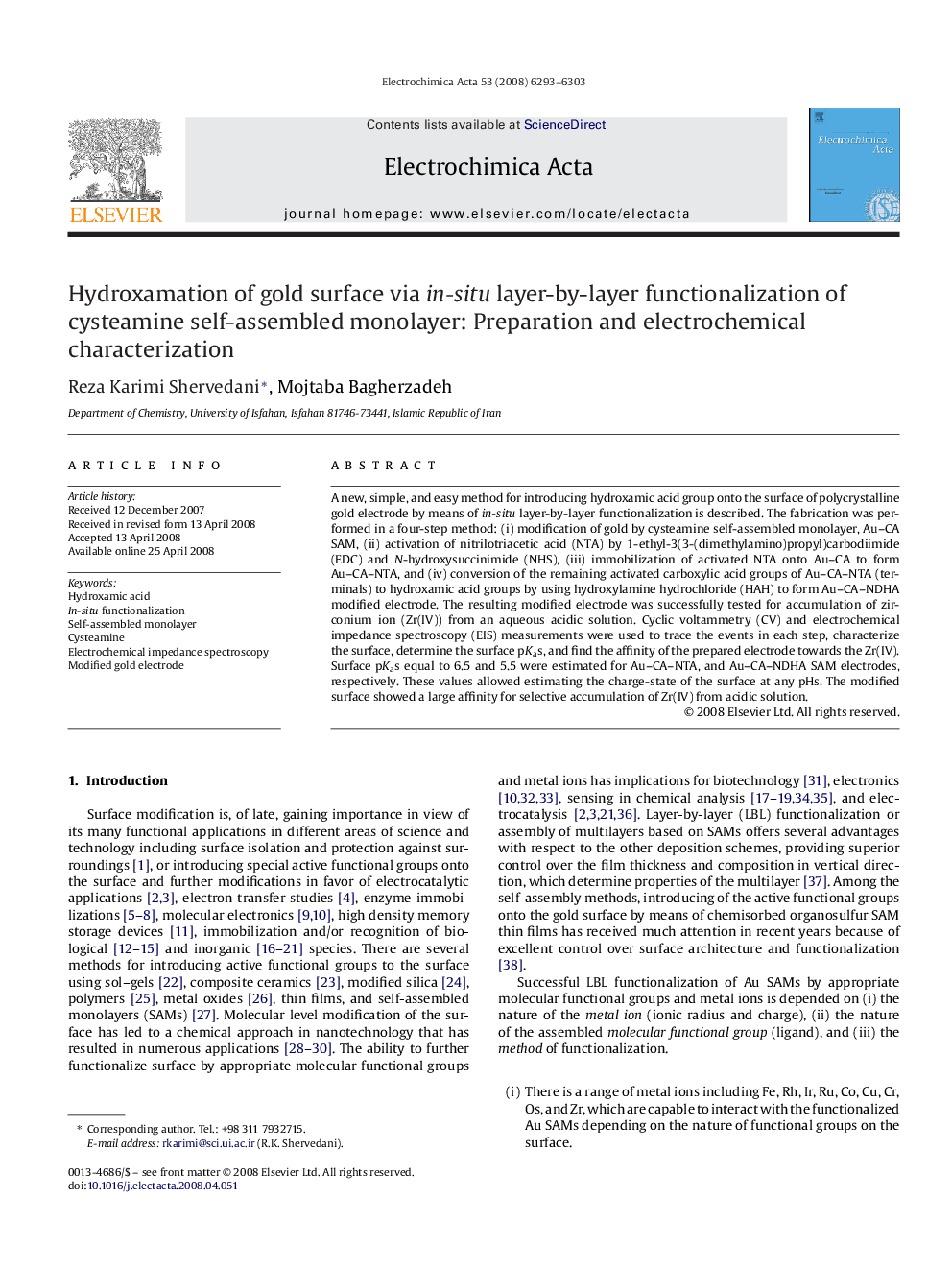| Article ID | Journal | Published Year | Pages | File Type |
|---|---|---|---|---|
| 195258 | Electrochimica Acta | 2008 | 11 Pages |
A new, simple, and easy method for introducing hydroxamic acid group onto the surface of polycrystalline gold electrode by means of in-situ layer-by-layer functionalization is described. The fabrication was performed in a four-step method: (i) modification of gold by cysteamine self-assembled monolayer, Au–CA SAM, (ii) activation of nitrilotriacetic acid (NTA) by 1-ethyl-3(3-(dimethylamino)propyl)carbodiimide (EDC) and N-hydroxysuccinimide (NHS), (iii) immobilization of activated NTA onto Au–CA to form Au–CA–NTA, and (iv) conversion of the remaining activated carboxylic acid groups of Au–CA–NTA (terminals) to hydroxamic acid groups by using hydroxylamine hydrochloride (HAH) to form Au–CA–NDHA modified electrode. The resulting modified electrode was successfully tested for accumulation of zirconium ion (Zr(IV)) from an aqueous acidic solution. Cyclic voltammetry (CV) and electrochemical impedance spectroscopy (EIS) measurements were used to trace the events in each step, characterize the surface, determine the surface pKas, and find the affinity of the prepared electrode towards the Zr(IV). Surface pKas equal to 6.5 and 5.5 were estimated for Au–CA–NTA, and Au–CA–NDHA SAM electrodes, respectively. These values allowed estimating the charge-state of the surface at any pHs. The modified surface showed a large affinity for selective accumulation of Zr(IV) from acidic solution.
